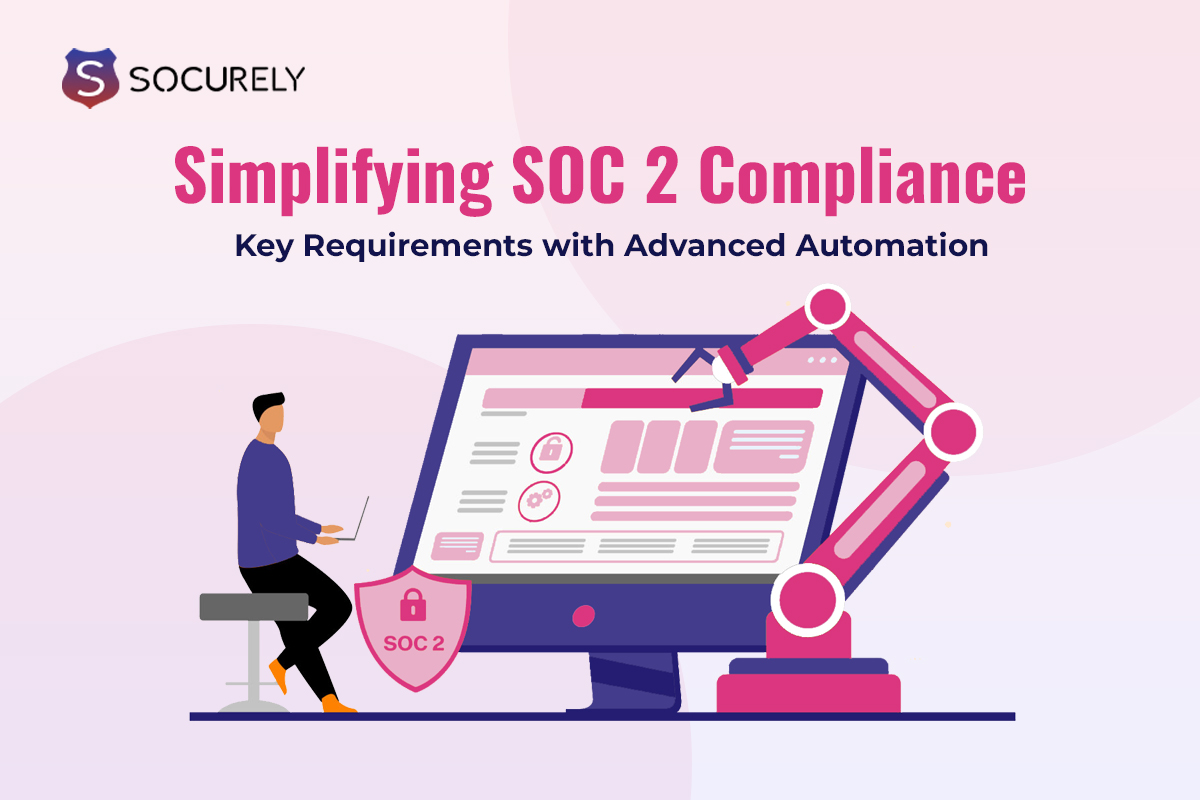
In the world of security-conscious businesses seeking a reliable SaaS provider, SOC 2 compliance is a non-negotiable benchmark. In the realm of SOC 2 compliance, deciphering the scenario can be akin to cooking without a recipe – where SOC 2 key requirements serve as your essential ingredients. Your goal is to craft a final dish that boasts a robust security stance and fosters customer trust. The challenge lies in the vagueness of these compliance requirements. In this article, we will solve the mystery of SOC 2, breaking down the essential compliance elements. Consider it your recipe for building trust with both auditors and clients, ensuring your business is not just secure, but also confidently so.
What is SOC 2?
SOC 2 Compliance is a framework of compliance requirements and audit processes designed for third-party service providers. Its primary goal is to assist companies in assessing the ability of their business partners and vendors to securely manage data and safeguard the privacy of clients. Developed by the American Institute of Certified Public Accountants (AICPA), SOC 2 reports come in two types:
SOC 2 Type 1: It focuses on detailing the systems and controls in place for security compliance. Auditors examine proof and verify adherence to relevant trust principles, providing a snapshot of controls at a specific point in time.
SOC 2 Type 2: SOC 2 Type 2, on the other hand, evaluates the effectiveness of processes in ensuring the desired level of data security and management over an extended period. It offers insights into the ongoing reliability of security measures.
What Do the Crucial SOC 2 Key Requirements Include?
SOC 2 compliance requirements center around specific criteria for effective customer data management, encompassing five trust services categories: security, availability, processing integrity, confidentiality, and privacy.
Security forms the foundation, focusing on protecting assets and data against unauthorized use. Key elements include implementing access controls, managing system operations, controlling change processes, and mitigating risks associated with business disruptions and vendor services.
The Trust Services Criteria document outlines common criteria, covering aspects like logical and physical access controls, system operations, change management, and risk mitigation. While criteria vary in scope, each company interprets and achieves them through diverse controls. The goal is to meet the desired end state outlined by the criteria.
For example, addressing Logical and Physical Access Controls might involve measures like onboarding processes, two-factor authentication, and data download prevention for one company, while another emphasizes data center access restrictions, quarterly permission reviews, and rigorous production system audits. Achieving these common criteria ensures compliance with the security principles, marking the minimum requirement for SOC 2 compliance.
Trust Services Criteria: Understanding the Core Elements
This section outlines the five essential Trust Services Criteria and provides examples of controls that an auditor might derive from each.
Security
While all SOC 2 requirements are optional, Security stands as a non-negotiable focal point. This category encompasses defenses against a spectrum of attacks, from man-in-the-middle incidents to unauthorized access by malicious individuals. Auditors may examine aspects like two-factor authentication systems and web application firewalls, as well as indirect influences on security, such as hiring policies for security roles.
Privacy
Privacy considerations extend to any information deemed sensitive due to its personal nature. To meet SOC 2 requirements for privacy, an organization must transparently communicate its policies to individuals whose data it stores. This involves obtaining consent, limiting data collection, using lawful means for gathering information, and adhering to defined data retention periods. Key SOC 2 requirements include communicating policies to affected parties, using clear language in privacy policies, and ensuring the legality and reliability of data collection processes.
Confidentiality
Distinguishing itself from privacy, confidentiality pertains to information that must be shared to be useful. For instance, health data is highly sensitive but valuable when shared among healthcare entities. Instead of solely focusing on secure storage, the confidentiality category emphasizes secure exchange. SOC 2 requirements cover the identification of confidential information, processes for retention, and secure destruction at the end of retention periods.
Processing Integrity
This criterion assesses whether systems for storing, processing and retrieving information function as intended. It extends beyond information security to evaluate a service organization’s trustworthiness in various operational aspects. Controls under Processing Integrity involve recording system inputs and outputs, detecting and addressing errors promptly, and defining processing activities to meet specifications.
Availability
The Availability controls in SOC 2 concentrate on minimizing downtime, requiring robust risk assessment. Organizations must predict system capacity, identify and mitigate environmental threats, and determine data requiring backup. SOC 2 requirements encompass measures to minimize downtime, establish recovery plans for disasters, and implement business continuity plans for unforeseen events. Additionally, controls assess capacity management baselines and identify environmental threats that could impact system availability.
Socurely, an advanced SOC 2 automation tool, simplifies the path to compliance by effortlessly connecting with, monitoring, and configuring your cloud infrastructure. With no need for agent installations, it conducts scans through read-only access, monitoring over 25 cloud services while providing a user-friendly dashboard to review vulnerabilities according to the SOC 2 key requirements. Socurely streamlines vendor risk assessment, aids in building customized SOC 2 compliance policies, and facilitates smooth employee onboarding and offboarding processes. The comprehensive package includes automated security controls, real-time monitoring, and support for various compliance standards, making Socurely the all-in-one solution for achieving and maintaining robust security standards.